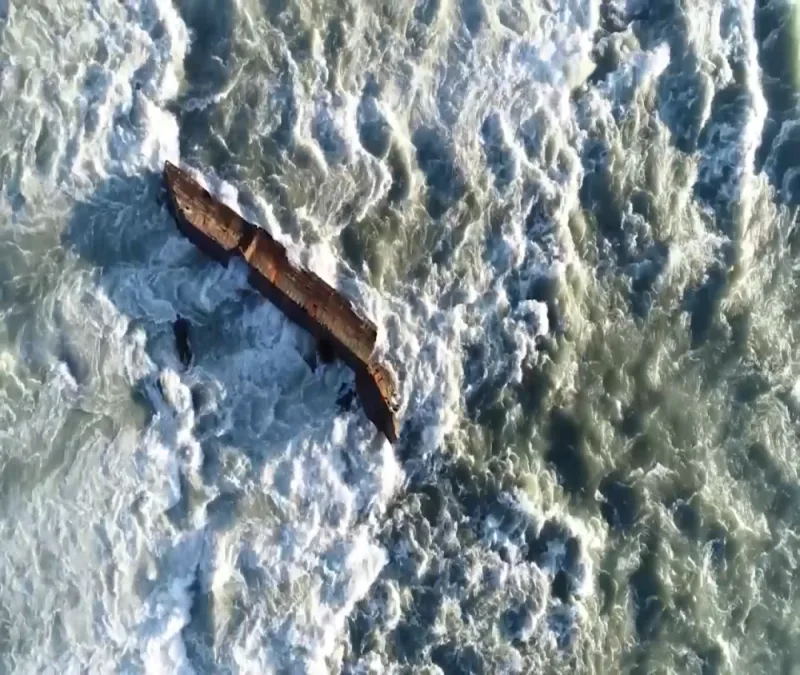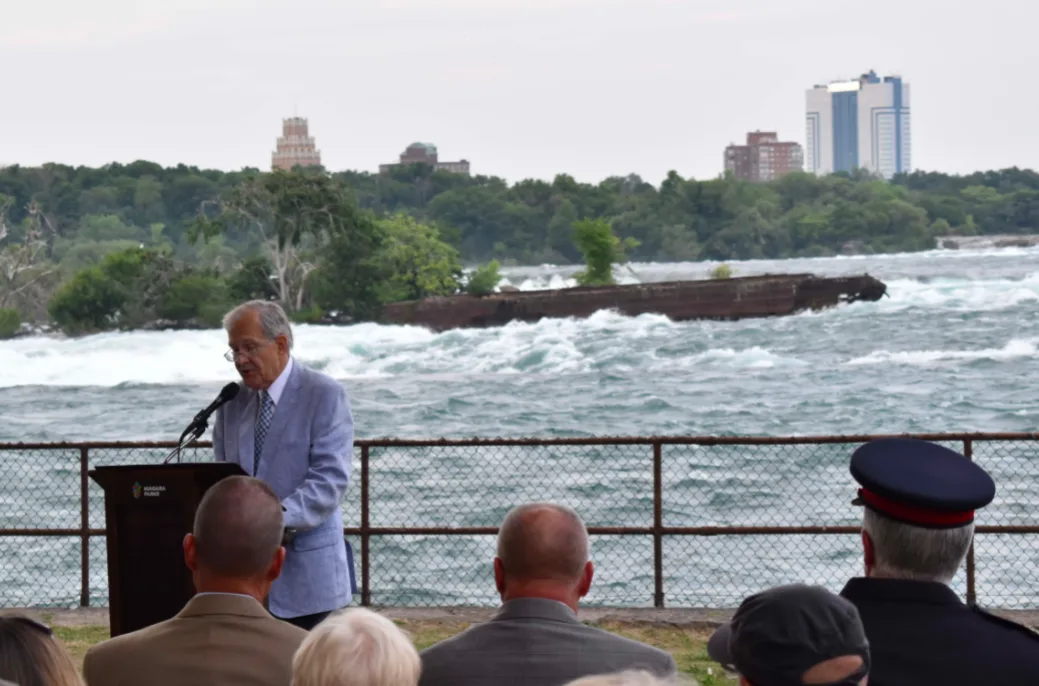
Iconic 104-year-old iron scow in Niagara River has broken apart
The iron scow, a historic landmark in Ontario's Niagara region, has finally succumbed to the elements.
After weathering countless storms during its 104-year stay in the Niagara River, the historic iron scow has deteriorated into three parts.
On Twitter, Niagara Parks stated that the scow “moved closer to the Horseshoe Falls last weekend due to the weather” and that “the potential of it washing over the Falls is not considered to be a public safety concern.”
The scow is a famous Niagara Falls tourist attraction and was once lodged approximately 600 metres from the edge of Horseshoe Falls. The last time it moved was when a fierce fall storm in 2019 "flipped [the scow] on its side and spun [it] around.”

A view of the iron scow from the Niagara River Parkway on December 22, 2009. (Diego Torres Silvestre/ Wikimedia Commons) (CC BY 2.0)
Jim Hill, Senior Manager of Heritage for Niagara Parks, said in a video posted on Twitter that the scow began breaking apart in 2019 and the recent weather has contributed to its deterioration.
“We had the ice boom come out last week, we’ve had wind again in the area, and that probably pushed enough water and ice down the river from Lake Eerie and hammered into what was left of the scow,” said Hill.
“Weather does have an effect here. But the scow has lived through decades of being pounded by the river and storms and ice, so it’s maybe just reaching the end of its life out there.”

A ceremony for the 100th anniversary of the iron scow rescue took place on August 6, 2018. (Niagara Parks)
According to Niagara Parks, the scow broke loose from its towing tug and became lodged in the shallow rapids of the Niagara River on August 6, 1918. Two men that were stuck on board, Gustav F. Lofberg and James H. Harris, were rescued through a collaborative effort by the Niagara Parks police, the Niagara Falls fire and police departments, and the U.S. Coast Guard.
Thumbnail credit: Niagara Parks
